
With the aim to enhance the
understanding of the opportunities and challenges of doing business in
China, Malaysia and ASEAN, a webinar titled “Belt and Road Initiative in
Southeast Asia: Origins, Variation, and Future Direction” was jointly
organised by China-ASEAN Business Association (CABA) and
UTAR on
3 December 2020 via ZOOM, CABA Facebook and CABA website.
Invited to be the speaker was
Alvin Jason Camba. He is a Sociology PhD candidate at Johns Hopkins
University. He has been awarded multiple best graduate research paper awards
by sections of the American Sociological Association (ASA) and funded by
foundations or research institutions namely, The Chiang Ching-kuo
Foundation, The Smith Richardson Foundation and Southeast Asia Research
Group. He has also contributed to major think tanks, for instance, Carnegie
Endowment for International Peace, Centre for Integrated and Private
Enterprise. His research on Chinese Capital in Southeast Asia has been
published at reputable development journals such as Development and Change
and etcetera. The moderator of the webinar was CABA Deputy President Datuk
Seri Mohamed Iqbal.
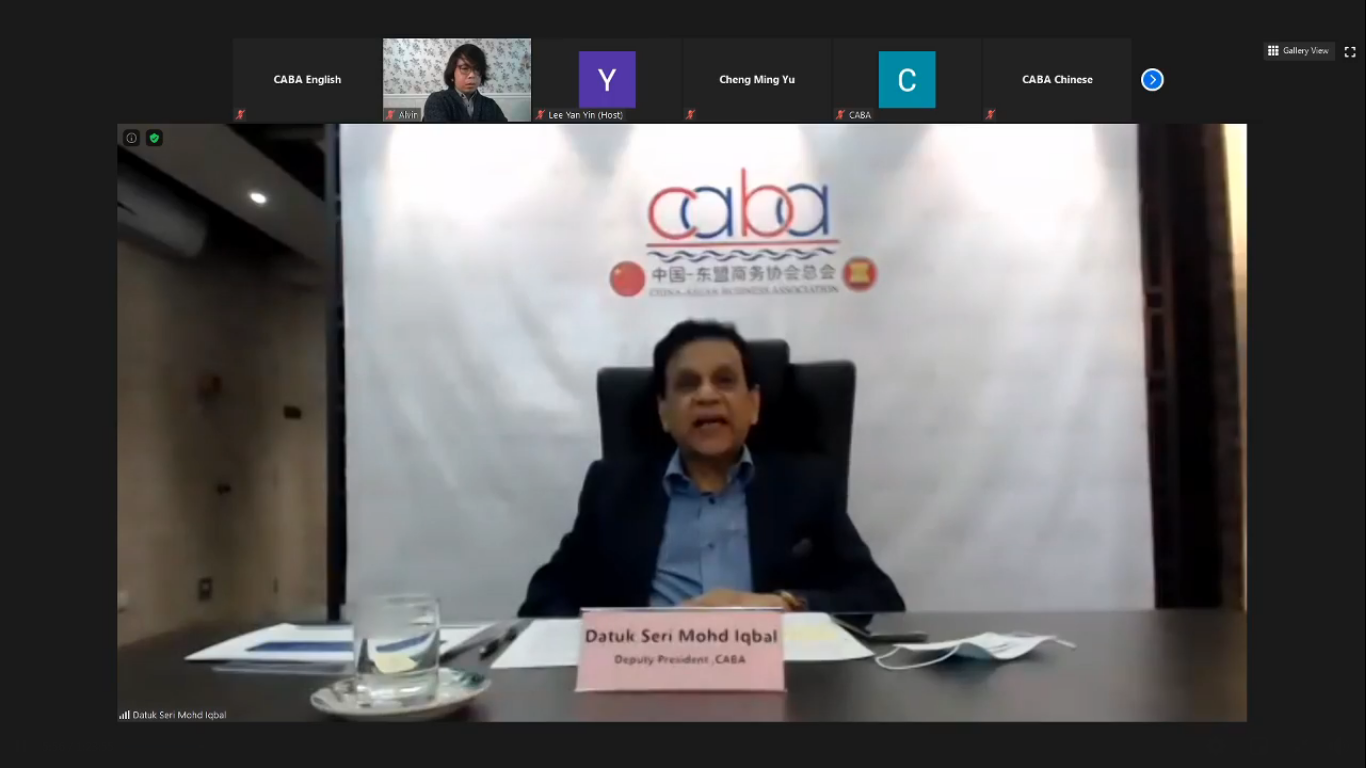
Datuk Iqbal
welcoming the participants
Welcoming the participants to the
webinar, Datuk Iqbal said, “We are very privileged to organise this webinar
today and to have a very important speaker Alvin Jason Camba with us. I want
to bring to you the good wishes and the gratitude of the President of CABA
Tan Sri Lim Gait Tong and President of UTAR Ir Prof Dr Ewe Hong Tat for
organising this webinar.” Meanwhile, he also mentioned that UTAR Institute
of Management and Leadership Development Director Prof Dr Cheng Ming Yu was
very much involved in organising the event as well.
In his opening remarks, Datuk Iqbal gave a brief introduction on the topic and said, “Last Friday, Chinese President Xi Jinping introduced a new framework about the Strategic Partnership Vision 2030 since the world is undergoing a very complicated relationship as a result of the Covid-19 pandemic. Under this scenario, we have to now look at 2021 and beyond 2021 into 2030. China comes out as a very strong strategic partner in the global sea, more importantly to the ASEAN and the South East Asia. With the introduction of RCEP (Regional Comprehensive Economic Partnership), it will find that the opportunities for trade and investment and people movement are going to be very much aligned from this year onwards. The Belt and Road initiatives was introduced in the year 2013 and over the seven years period, it has taken on a very dynamic kind of collaboration from China stretching into the South China Sea, the ASEAN economies, the Asian economies, Africa and Europe.” Meanwhile, he also briefly introduced the speaker before the talk commenced.
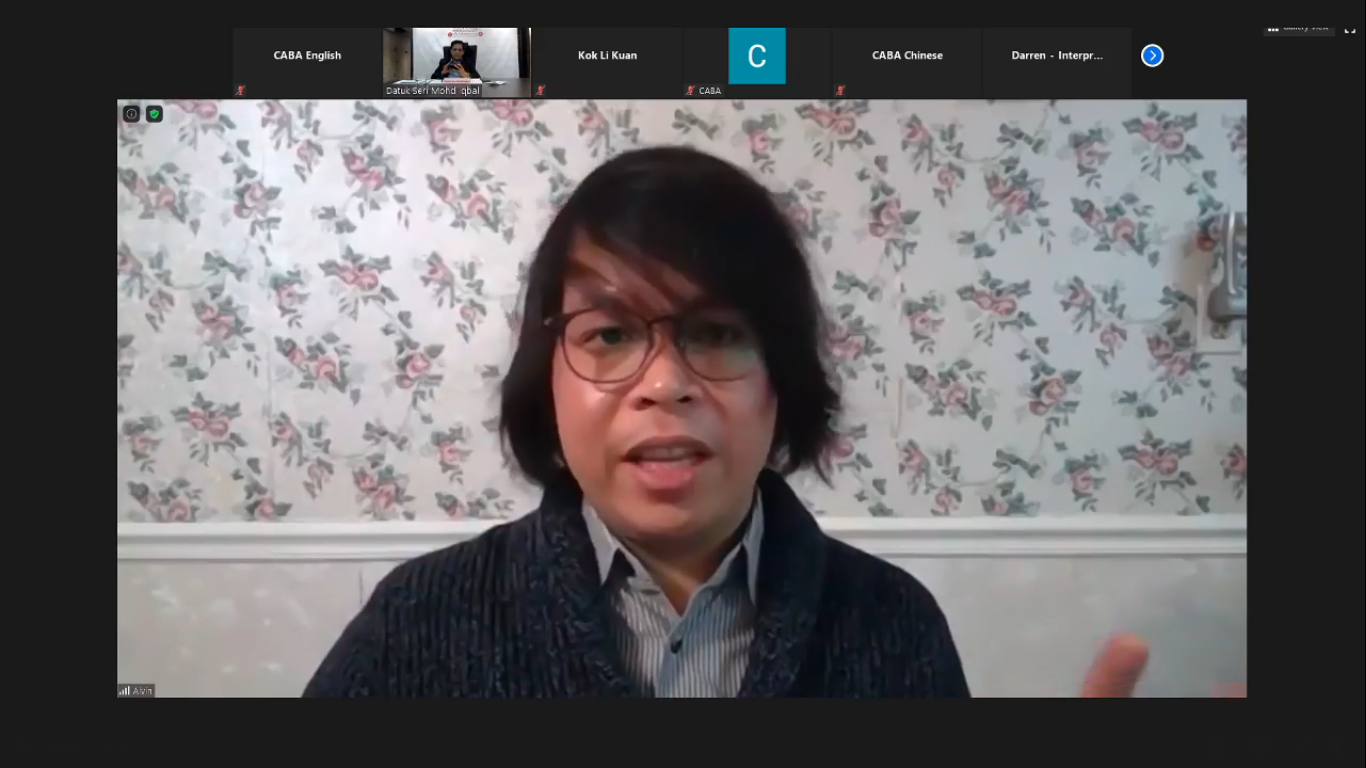
Alvin
During the presentation, Alvin shared arguments pertaining to the Belt and
Road Initiative (BRI). He said, “There are five important pillars of BRI,
namely policy coordination, facilities connectivity, unimpeded trade,
financial integration and people-to-people exchange. All of them are
happening in a different variation, different degrees and different parts of
the world. However, there has been an emerging argument on BRI, which it is
to increase the capacity of the Chinese Communist Party to reshape
globalisation. It is an attempt of the Chinese Government, specifically the
Chinese Politburo, to reshape the globalisation process as a reflection of
China’s own economic processes. Nonetheless, I would like to argue that even
without the initiatives, projects driven by the BRI will likely continue.
There is a distinction between the Belt and Road as an initiative and as a
group of projects. Belt and Road projects or economic engagements by the
People’s Republic of China are driven by other dynamics. There are
differences in the BRI and their projects across different states, explained
by within-country dynamics.”
While explaining the Belt and Road, he said, “There are two competing
interpretations for the Belt and Road and these interpretations are very
polarising. In the Western narrative, they look at the Belt and Road as
China’s attempt to expand the geopolitical initiative. This course has
manifested Belt and Road ‘Debt trap’. The idea is China gives a loan to host
country government and this loan is often converted by unreasonable terms
that will make the host country give up a particular asset in exchange for
being a bad loan. So, this is what allows them to expand and acquire
property and land in different parts of the world, especially Southeast Asia
and South Asia.”
“The other interpretation of the Belt and Road from the Chinese narrative is
Belt and Road is a way to achieve ‘common destiny’. It is the idea of the
common destiny of humanity to achieve economic development by building a
huge infrastructure in many parts of the world specifically South Asia,
Southeast Asia and Africa. This is not a bad thing, obviously more
infrastructure the better, but there are limited lands. We have to think
about carbon emission and pollution and coal-fired power plant, which are
very bad for ‘Climature’. So in many ways, what should be pointing out here
is that these two narratives of Belt and Road are limited and we have to go
beyond them,” said Alvin Jason Camba.
He added, “Coming to my interpretation, Belt and Road allows the Chinese state elites to mobilise financing and policy initiatives to open up new areas and fund projects which attempt to remake globalisation in the image of China’s own state of development. If we take a look at the Belt and Road, in many parts of the world (not including Malaysia), it is very messy; the projects are not coordinated. If we go through the literature on Chinese economic development in early 2000, the way economic development in China occurred is not always centralised. It is through the coordination of the Chinese Central Government and the competing states. States and local government have their own power and they compete against each other for projects and Foreign Direct Investment (FDI). Nonetheless, the Belt and Road as an initiative, is centralising the messiness and expanding the capacity of the Chinese states; sort of have more power in the economy. Belt and Road, as an initiative, has put in money on different projects, we need to understand the different types of Chinese capitals. This is what we can expect going forward that the Belt and Road is going to centralise Chinese states capacity and allow China to sort of influence economic development in the Global South.”
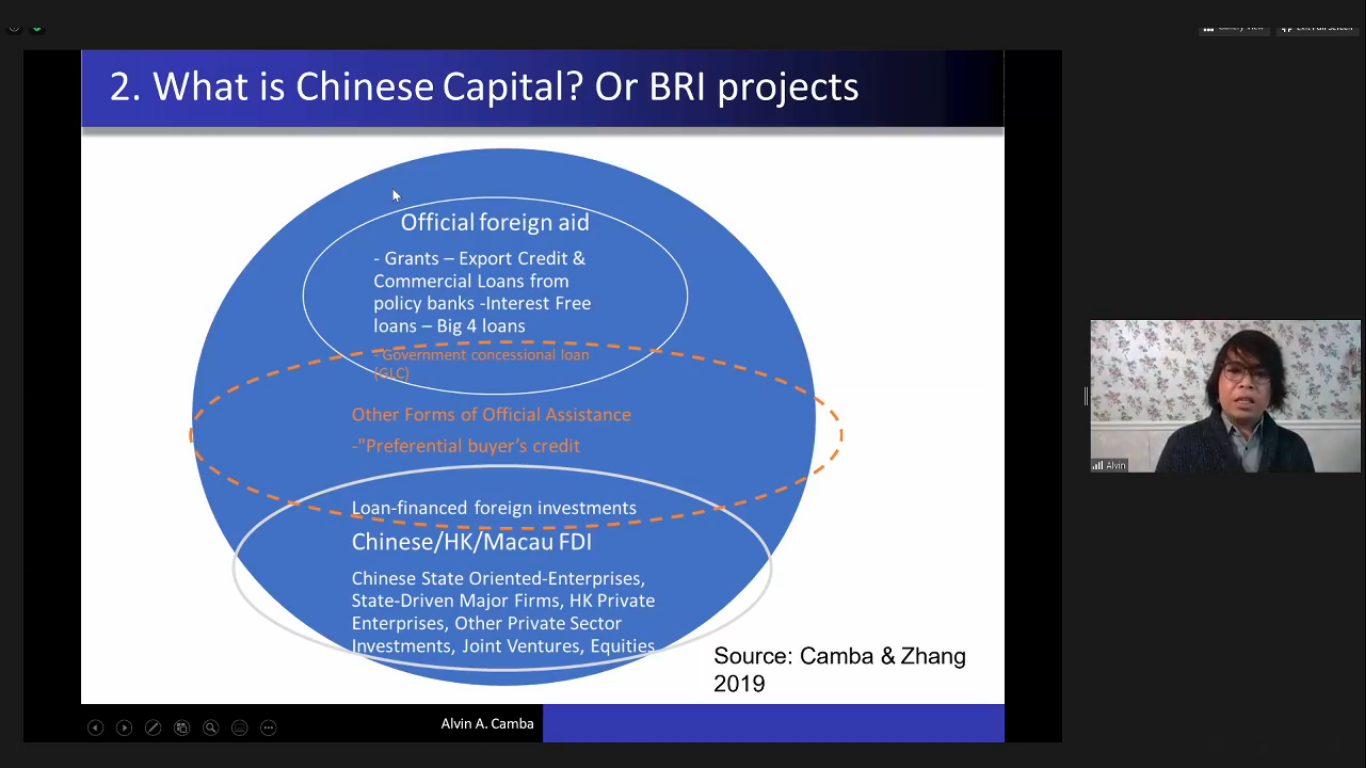
Alvin highlighting the messiness of Chinese Capital money going into the Global South
He then continued to explain who was involved in the Belt and Road and how people have made an argument on the distinction between State and Private Company in the context of China. On top of that, he has also recommended some dataset which can be used to analyse the Chinese FDI, Chinese Aid and even Belt and Road projects, namely China Global Investment Tracker Dataset, William & Mary Dataset and MOFCOM Dataset, to name a few. He also shared with the audience on the Philippines Dataset which he created using shareholder data in the Philippines; he gathered all the companies with Chinese foreign direct investor and tabulated them to show the number of new companies with foreign direct investors from China.
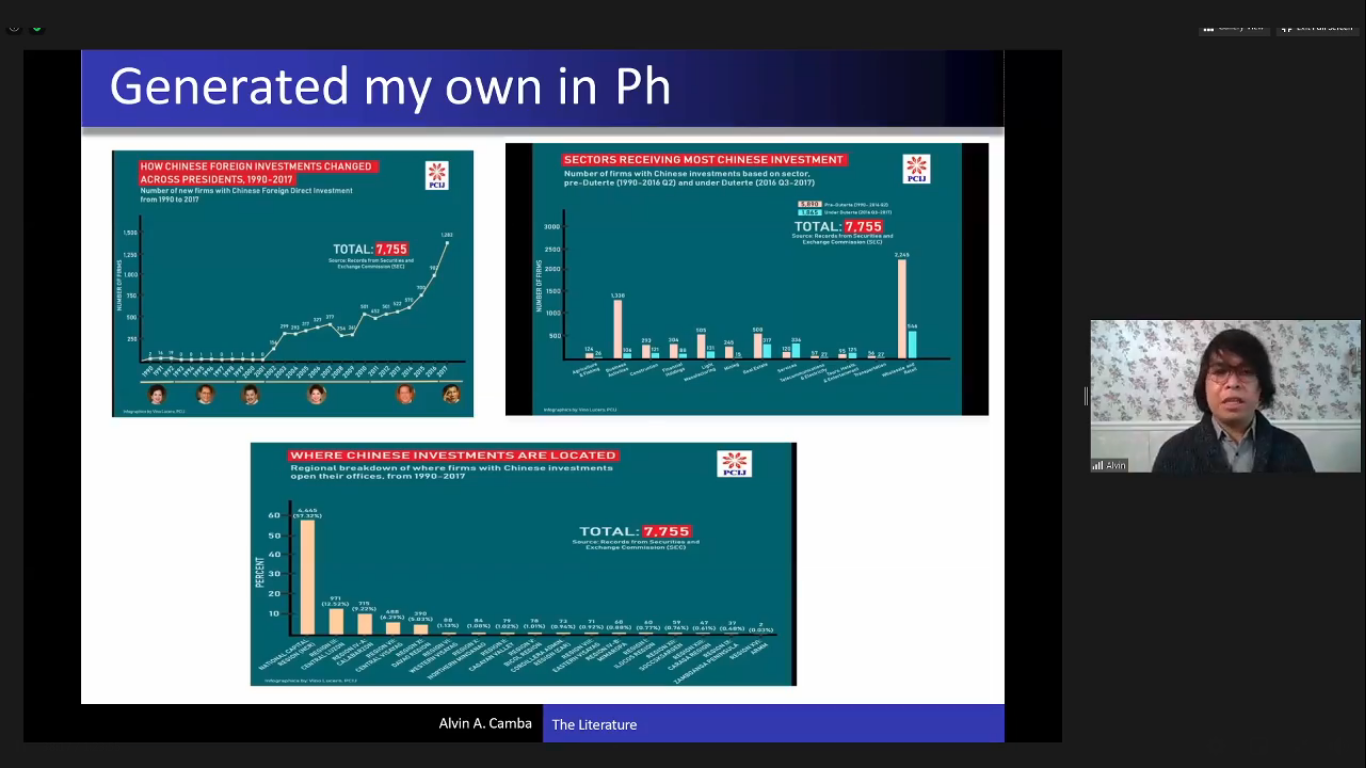
Philippines dataset
created by Alvin
Focusing on three economies, namely Indonesia, the Philippines and Malaysia
while explaining what had taken place so far in each country involved in
Belt and Road, he highlighted three important projects in Indonesia, namely
Indonesia Morowali Industrial Park located in Central Sulawesi,
Jakarta-Bandung High-speed Railway and Coal-fired power plant.
Speaking of the BRI in the Philippines, he highlighted the Kaliwa Dam
project and the North-South Railway project. He also shared about the
biggest Chinese project in the Philippines which is an online gambling
platform legalised in 2016. Although it is not connected with the Belt and
Road, it is expanding in the Philippines.
He also shared his finding from the scholars on the BRI in Malaysia,
namely Malaysia-China Kuantan Industrial Park which is a market-driven
project in Malaysia. On top of that, he also talked about other BRI in
different Southeast Asia states such as Sino-Thai Railway project in
Thailand and coal-fired power plant in Vietnam, to name a few.
Analysing what has happened and what has changed since the BRI in Southeast
Asia, he said, “The Belt and Road projects have actually increased in all of
these countries. The research extraction projects decreased when the Belt
and Road was initiated. The
sectors that have a mixture of states and private companies have also
increased, whereas the private sector investments have not really increased
besides the Philippines. Hence, the argument here is that the Belt and Road
has an effect, but the effect is not uniform and it is varying; it depends
on the country that you are looking at.”
The one-and-a-half-hour webinar was then concluded with an interactive Q&A session.

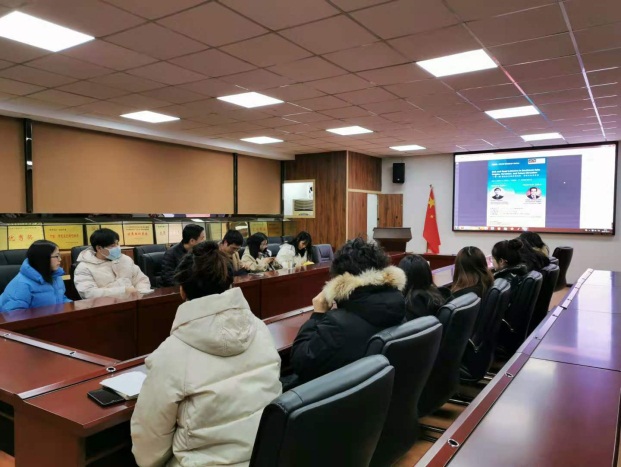
The CABA-UTAR webinar saw participation from the School of Management Guizhou University
Watch the CABA-UTAR webinar here.
Wholly owned by UTAR Education Foundation Co. No. 578227-M LEGAL STATEMENT TERM OF USAGE PRIVACY NOTICE